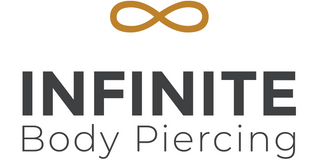Earlobes are by far the most common piercing in the world and are one of the oldest forms of body modification. Historically, pierced ears (at least in Western society) have been considered a feminine adornment—with the exception of the occasional sailor. More recently, pierced ears for men started to become fashionable with hippies and gay men in the 60s, punks and artists in the 70s, and musicians and actors in the the 80s. By the 90s and the new millennium they became commonplace in the culture (or counterculture) for both men and women.
The process of how earlobes are pierced has evolved just as much as who wears earrings has. In the the not-so-distant past, ear piercing was commonly done at home with ice and a sewing needle. Ear piercing guns were later developed (originally for use by doctors), but soon they found their way into retail stores and piercing kiosks at malls across America. While the majority of those with ear piercings in the U.S. have had them done with a piercing gun, this is arguably not the best method to use. (Check out our FAQ section for more information.) It is generally agreed by body art professionals that the cleanest, quickest, and safest way to pierce ears is the same way we perform all of our piercings: with a sterile, single-use, disposable needle and aseptic technique.
While the jewelry choices that can be worn after healing are almost infinite (pun intended), jewelry choices for initial piercings are a little more limited. We will usually suggest an 18 gauge or 16 gauge press-fit barbell. These have a wide variety of “fronts,” from plain silver balls to faceted stones and even gold with diamonds. If you are planning on stretching later, earlobes can initially be pierced as large as 8 gauge—or, in some cases, even larger—using single-flared glass plugs. Come in and talk to one of our piercers about larger-gauge piercing options.
Earlobe piercings usually 10-12 weeks to heal. After that time, jewelry may be changed, but they should not be left empty at all during the first year, as there is still some risk that the piercing may close. During the first few months you will want to clean them twice a day. (For more information, check our aftercare.) And as with any fresh piercing, you will want to keep dirty hands, hair, hair products, telephones, and other people’s mouths away from the area. Lastly, earlobe piercings are extremely easy to stretch, opening up a whole new world of possibilities for jewelry. Check our stretching section for more information.























































